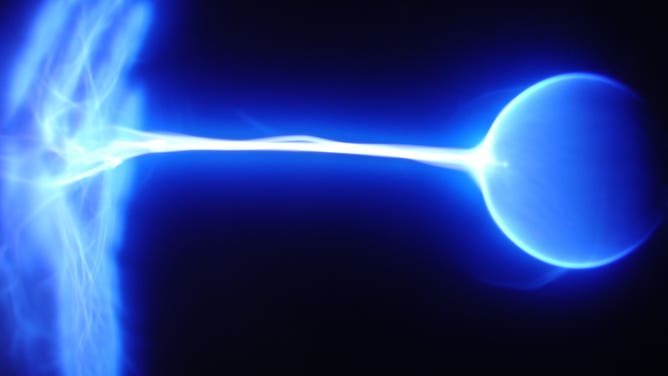When sparks fly: How static electricity can be a shock to your system
When you touch that railing, your pet, or your unsuspecting younger sibling you create a circuit, and the imbalance is released as a tiny jolt of electricity that you feel as a shock.

Photo by Amos from Stockphotos.com on Unsplash
You're walking along in your socks along the carpet on a sunny and relatively dry day and make the unfortunate mistake of grabbing onto a metal railing, or petting your dog or handing something to your roommate.
ZAP! Ouch! What just happened? It feels as if a tiny lightning bolt just struck your skin!
Generally speaking, it did. What you felt was the discharge of static electricity.
All objects carry three types of atoms -- electrons, which have a negative charge; protons, which are always positive (but perhaps not always cheery) and neutrons, which remain neutral.
Much of the time, these elemental blocks of matter live in balance and keep our touches pain-free. But rubbing certain materials together -- like shoes or, better yet, socks on the carpet -- can transfer negative electrons, according to science librarians with the Library of Congress.
"Your body collects extra electrons. The electrons cling to your body until they can be released," the science librarians said.
That imbalance creates static electricity. And those protons and electrons are big believers in the phrase "opposites attract" and will do what they can to join together.

Table showing which items are best and worst at creating static electricity.
(Virginia Department of Education)
When you touch that railing, your pet, or your unsuspecting younger sibling ("Ow! I'm telling MOM!"), you create a circuit, and the imbalance is released as a tiny jolt of electricity that you feel like a shock.
"Don’t worry, it is only the surplus electrons being released from you," the science librarians added.
You can see static electricity at work in other ways. For example, have you ever seen the way your hair sometimes stands on end when you take off a hat? You’ve transferred electrons from the hat to your hair, which already has enough electrons; thank you very much.
Much like the siblings in the example above, electrons repel each other, and your now-electron-fueled hair is trying to get away from your electron-fueled head. Your hair will stand on its end in a futile escape attempt.

Still a favorite with children and adults is the demonstration of static electricity.
(Ron Bull/Toronto Star / Getty Images)
How about the trick of making a balloon stick to the wall after rubbing it on your head? Remember, your hair has lots of electrons, but rubbing a balloon against it will add electrons to the balloon surface.
"The wall is now more positively charged than the balloon. As the two come in contact, the balloon will stick because of the rule that opposites attract (positive to negative)," the librarians said.
Hate static shock? Avoid winter. And Arizona.
... or move to Florida and avoid both.
One thing you might have noticed in your static-electricity-induced mayhem is that the zaps are more prevalent on dry, low humidity days than moist, humid days. That's because water vapor acts as its own conductor, and moist air will help neutralize any static buildup. In humid climates like Florida and the southeast, static electricity buildups are rare. But in the Desert Southwest, it's a constant way of life.
Some spots with climates in-between will notice static issues are more prevalent in winter than summer. Colder air holds less moisture than warmer air which is one point in static electricity's favor. In addition, when you're heating the home in winter, the relative humidity will drop quite a bit as the furnace-fueled temperatures rise, but the dearth of winter water vapor content remains the same.
What about the big lightning bolts?
Traditional lightning you see and hear out the window is just one large form of static electricity!
Raindrops and ice crystals inside the turbulent chaos that makes up a thunderstorm will bounce and run against each other, building up static electricity.
Once enough charge has built up within the cloud and/or with items on the ground, a circuit will connect, allowing the massive electrical discharge you see as lightning. ("Ow! I'm telling Mother Nature!")